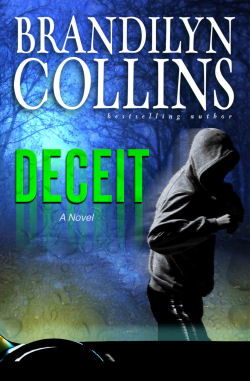|
This
is our third and final month of looking at George Polti’s The
Thirty-Six Dramatic Situations. (If you missed Part 1 before continuing.) or Part 2 , please read them before
continuing.
Now that we’ve covered the
thirty-six situations and the five ways they can be changed to create a
unique story, how about ways to use them in creating story twists? One
way is to lead the reader to think the premise of your plot is one
situation, when it’s really been about another situation all along.
This is particularly effective when the two situations are opposites.
This is what happened in that
wonderful twisty movie The Sixth Sense. (Warning—spoiler ahead. If
you’ve somehow managed to miss seeing this movie, rent it before you
read on.) After a near fatal injury, the protagonist, child
psychologist Malcom Crowe, sets out to help Cole, a nine-year-old boy
who claims he sees dead people. Apparently these dead folks come to the
boy not to scare him but for his help in some way. The child is
understandably distraught about the situation, and his mother is at the
end of her rope in trying to help him. Crowe seems to be his last hope.
The psychologist takes the case and begins visiting Cole in an effort
to help cure him.
So far it appears that the main
plot of this movie (subplots aside) is based on situation
#2—Deliverance (rescuer of his own accord helping the distressed). But
far into the movie we discover the twist. Malcom died from the
near-fatal injury he sustained at the beginning of the movie. He’s not
a live child psychologist trying to help a patient; he’s now one of the
dead people struggling to move on, and who needs Cole’s help to do it.
So the movie isn’t based on situation #2 at all, but situation
#1—Supplication (someone in a weak position, e.g., Malcom Crowe,
begging help from someone in a position of strength, Cole).
What made this twist so powerful
was that it brought together two situations that were polar opposites.
Now, you can’t divide the list
of thirty-six situations into eighteen polar opposites. There actually
are only a few exact opposite pairs. To create the greatest twists,
concentrate on using one of those pairs. But that doesn’t exclude
pairing any of the other situations into a twist. (Or even morphing
from one to a second to a third.) Reread the list and let your
imagination go. How could you change one situation into another?
For
example:
What if #3—Crime Pursued by
Vengeance—twists into #5—Pursuit (where the fugitive is often
innocent)?
What if #7—Falling Prey to
Cruelty or Misfortune—twists into #17—Fatal Imprudence?
|
What
if #20—Self-Sacrificing for
an Ideal—twists into #16—Madness?
All sorts of interesting
possibilities.
I used the thirty-six situations
once when I needed to create a story (already contracted as a “blind
book”) but had absolutely no idea for one. I knew I wanted a major
twist. So I looked for those situations that are opposite in nature and
went from there. How could the premise, based on the first situation,
twist into the second? This method got me started when I had no
inspiration.
And that—lack
of inspiration—is one huge reason for this kind of study of the craft
of fiction. Not just studying how to write POV and dialogue but the
underpinnings of story. Because sooner or later, every novelist will
need to write and will have no inspiration whatsoever to do so. (Trust
me, if you keep writing, this will happen.) It’s one thing for it to
happen when you’re not contracted, and you can just give yourself a
rest. But what if you have a deadline—and no idea? All you have to fall
back on is your knowledge of the craft. Understanding The
Thirty-Six Dramatic Situations may be just the thing to
breathe new life into your creativity.
A reprint of The Thirty-Six
Dramatic Situations is available on Amazon for $15.95.

 |